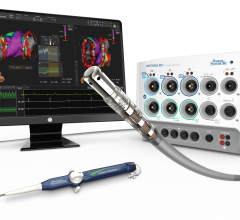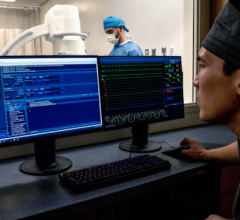This comparison chart features three categories of stents: coronary, carotid and peripheral. We gratefully acknowledge ...
September 3, 2008 – Research published this week in the New England Journal of Medicine said patients with heart failure in whom an ICD is implanted and receive shocks for any arrhythmia have a substantially higher risk of death than similar patients who do not receive such shocks.
Spectranetics Corp. recently announced the availability of its LLD EZ Lead Locking Device (LLD) for the removal of ...
Providing exceptional cardiovascular care for patients to achieve the best possible outcomes is the number one goal for ...
TRUMPF Medical Systems Inc. offers an in-light high-definition (HD) operating room camera, the TruVidia HD, which ...
St. Jude Medical’s Promote RF CRT-D (cardiac resynchronization therapy defibrillator) and Current RF ICD (implantable cardioverter defibrillator) are radiofrequency (RF) wireless devices used to treat patients with heart failure and with potentially lethal heart arrhythmias.

The process of the coronary CT angiography (CTA) becoming the preferred imaging modality is akin to the process of obtaining a pilot’s license.
Cardiac positron emission tomography (PET) is growing in popularity among cardiologists because it provides the ability ...
Cook Medical recently launched the EVOLUTION-Shortie Mechanical Dilator Sheath Set, a tool for venous entry during ...
Carestream Health’s CARESTREAM Virtual 3D Solution is a 3D software package designed to deliver advanced 3D processing ...
Medtronic’s Concerto/Virtuoso line of implantable cardiac devices feature Medtronic’s proprietary Conexus Wireless Telemetry, developed using the Medical Implant Communications Service (MICS). Using the MICS band enables reliable communication between the implanted device and clinician programmers and patient home monitoring units.
When performing radiofrequency (RF) ablation to treat cardiac arrhythmia, medical professionals must balance the safety ...

The use of embolic protection devices (EPD) during percutaneous cardiac procedures has helped reduce the number of complications due to debris being released into the bloodstream and causing blockages in smaller vessels. The devices are designed to capture and remove debris that may be dislodged during procedures. There are three classes of EPD devices:

In as much as the environment in which you live can affect your quality of life, so can the environment in which someone receives medical care affect patient outcome – at least in theory.
September 3, 2008 – While a recent study into whether using unselected and selected bone-marrow derived cells can help with regeneration of heart tissue did not lead to significant improvement of LVEF and LV volumes in comparison to control group, there was a trend toward significant improvement of LVEF in patients with severely depressed baseline LVEF receiving either MNC or CD34 CXCR4 bone ma
Change Healthcare Cardiology Hemodynamics is an integrated hemodynamic monitoring system for monitoring vital signs and ...
LUMEDX Corp. offers the CardioPACS 5.0, the latest version of its cardiology PACS software. The multimodality, Web ...
Cook Medical has received approval from the FDA for its Zenith TX2 Thoracic TAA Endovascular Graft, marking the expansion of Cook Medical’s portfolio of devices to treat aortic diseases.
St. Jude Medical Inc. recently released its EnSite System Version 8.0, software designed to intuitively visualize the ...

 September 03, 2008
September 03, 2008



